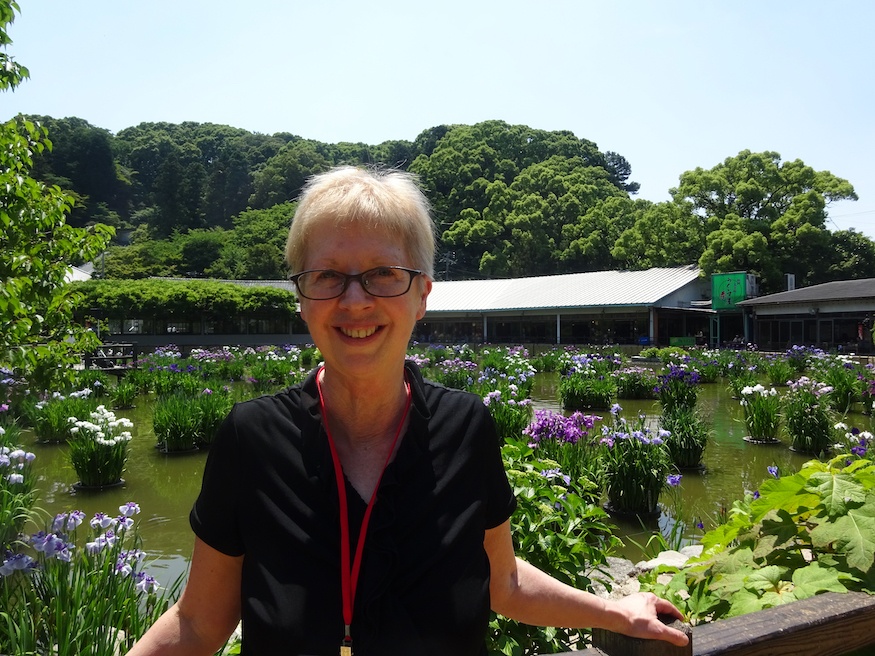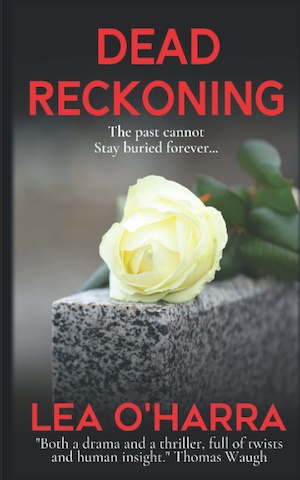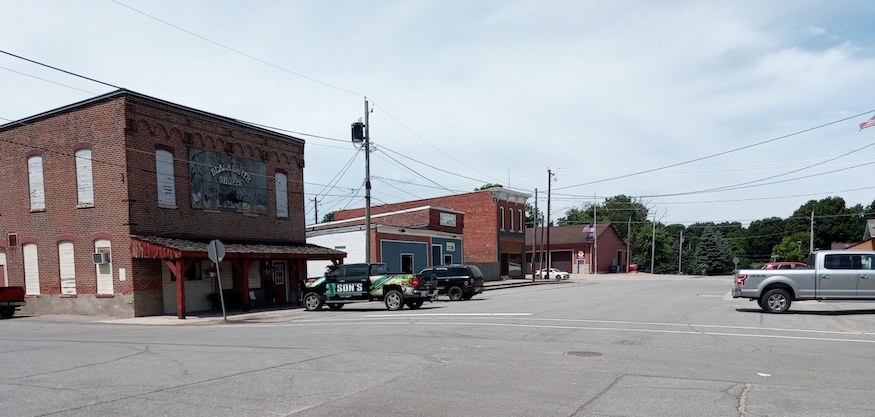
The American crime author Lea O’Harra has lived in small-town America and small-town Japan, and has used these experiences in her Inspector Inoue novels as well as her latest book, Dead Reckoning. Here she joins us to talk about the parallels, the differences and the feelings such places evoke…
The setting of the three novels comprising my Inspector Inoue thrillers – Imperfect Strangers (2015), Progeny (2016) and Lady First (2017) – is small-town Japan. I specifically based the fictional Fujikawa on a town in Shikoku, the smallest and most rural of Japan’s four main islands.

Like Fujikawa, that Shikoku town is home to a university that is the major employer of the inhabitants and provides its only claim to fame. Like Fujikawa’s, the university is located on a former army base that, in the wake of World War II, was founded by Presbyterian missionaries to promote liberal values rather than militarism.
Like Fujikawa, that town is characterised by a kind of colourful chaos. That is, its narrow roads are crowded by pedestrians, cyclists, cars and buses. There are signs everywhere – garish neon ones as well as billboards – advertising hairdressers, gas stations, drug stores and bicycle shops. Utility poles line the roads, linking nests of wires overhead. When we are driving or cycling or walking, it can be hard to get a glimpse of the sky. Like Fujikawa, the town is surrounded by rice paddies and, in the distance, the gentle undulating silhouette of mountains.
There is also the matter of zoning – a concept unknown in Japan where, it seems, anything can be built anywhere. An ancient temple with weathered wood walls, a tiled roof and a garden of well-trimmed topiary might stand next to a bright pink ‘love hotel’ that, with fake turrets and towers, resembles a child’s idea of a castle. A beautiful old traditional Japanese farmhouse can suddenly find a huge gas station about to be erected beside it. Many urban buildings are simply ugly: structures of corrugated iron or concrete quickly stained by rain or pollution. Also, until recently, when modern sewerage systems were finally installed in rural Japan, there often used to be a faint odor of human waste lingering in the air.

Finding it difficult to reconcile the stunning beauty of the Japanese countryside with its (mostly) hideous towns and cities, I once asked a German friend, a fellow long-term expat in Japan, his own opinion. I was particularly curious given the strange affinity between Germany and Japan: two countries defeated in World War II that were bombed to smithereens or reduced to ashes in firestorms. In postwar Japan, it was obviously a case of anything goes while Germany meticulously sought to reconstruct its magnificent old city centres.
I have always remembered my friend’s answer. “I find it refreshing,” he said, surprisingly. “Here there is a kind of anarchy. In Germany we have to obey rules whenever we build something or take it down.”
Given that Japan remains one of the world’s most homogeneous societies, with 98 per cent of its population consisting of ethnic Japanese, it is scarcely surprising that the foreigner in its small rural towns is an oddity. That is the case in my fictional town of Fujikawa and the actual town on Shikoku island it is based on. We gaijin – a term literally connoting ‘outside person’ – are stared at, wondered about, and sometimes viewed with fear or suspicion. We stick out like the proverbial sore thumb.
Our sense of being set apart is exacerbated by the language problem. Japanese, with its hierarchical and complex linguistic structure and its four writing systems, is notoriously difficult to learn to speak, read and write. Recently foreigners fluent in Japanese have appeared on the scene. They are individuals who have zealously studied the language in their own countries before moving to Japan. Alas, many of us gaijin who moved to Japan decades ago can still manage just basic conversation.
The foreigners in my novels tend to stick together and have little meaningful interaction with the Japanese around them. Many of my gaijin are Western men married to Japanese women. They must rely heavily on their wives to navigate daily life and often revert to a kind of irresponsible childishness.

In writing my recent standalone mystery – Dead Reckoning (2022) – I returned to my own childhood. This novel is set in a tiny town in the northwest corner of Indiana. In fact, fictional Byron is based on my own hometown of Rolling Prairie, which had a population of 500 when I grew up there and is scarcely larger or more populous now.
Like Byron’s, Rolling Prairie’s main street is two blocks long and a dead-end, terminating in the entrance to the town’s grain elevator. In the past decade or so, half the town centre has been destroyed by fire. It was a prosperous place when I grew up; now it seems a town without a future. I loved growing up there; now I find it depressing.
The novel follows two timelines: the protagonist Gilly’s childhood in the early-1980s and the early-2000s, when she returns as a woman in her late 30s to attend her mother’s funeral. For Gilly as a child, Byron is a kind of paradise. She and her friends play outside during the long summer holidays. They cycle down deserted streets, play baseball in vacant lots, and climb trees. They frequent the mom-and-pop store with its soda fountain, pinball machines and booths with juke boxes.
When Gilly is 12, however, she makes a chance discovery in the town cemetery that changes and even endangers her life and marks the end of her carefree childhood. It takes her decades to recover from the disastrous consequences of that discovery. Like me, Gilly is dispirited by seeing her hometown in its latter incarnation, when it lacks even a grocery story.
It’s a story repeated throughout the American Midwest in the 21st century. The idyllic small towns pictured in old-fashioned films are now filled with derelict houses and vacant shops. Middle-class families these days prefer living in gated communities or prosperous city suburbs. I’ve loved recreating in my books places where I’ve lived. I think we are all deeply affected by our environment. I hope the reader of my novels finds my depiction of the fictional towns of Fujikawa and Byron interesting and illuminating.
Lea O’Harra’s Imperfect Strangers, Progeny and Lady First have recently been re-issued by Sharpe Books and will be available on special 5-12 February 2023. Use the buttons below to order. Meanwhile, you can find out more about Lea on her website, and follow her on Twitter and Instagram.






